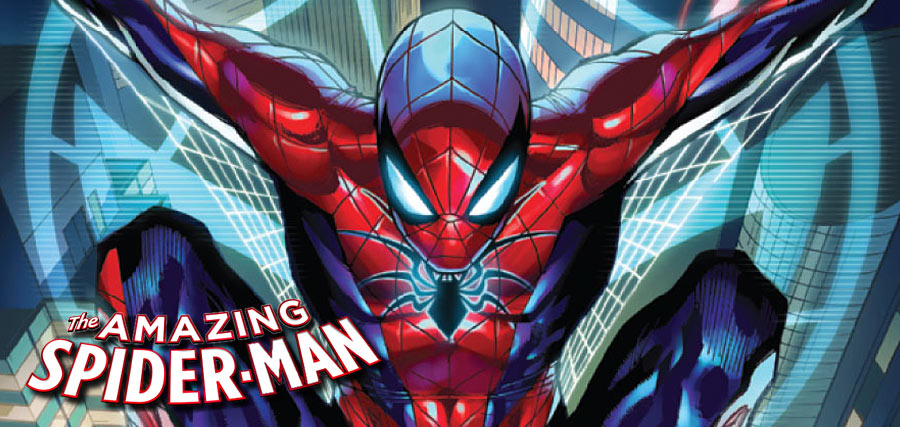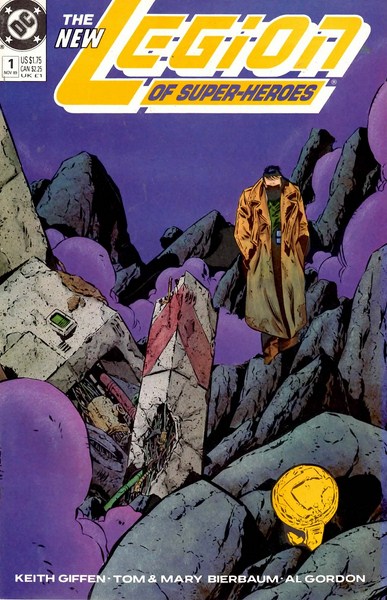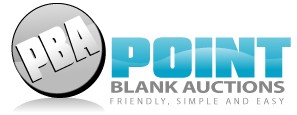
Someone asked about our grading process, so I decided to post this. We try our best to follow the grading process provided by the Overstreet Price Guide (please note that we are not perfect and everyone has an different point of view). We will probably re-post this information (below) every 6 months to remind all of the process we follow.
10.0 GEM MINT (GM):
An exceptional example of a given book – the best ever seen. Only the slightest bindery or printing defects are allowed. Cover is flat with no surface wear. Inks are bright with high reflectivity. Corners are cut square and sharp. Spine is tight and flat. Staples must be original, centered and clean with no rust. Paper is white, supple and fresh. No interior autographs or owner signatures.
9.9 MINT (MT):
Near perfect in every way. Only subtle bindery or printing defects are allowed. Cover is flat with no surface wear. Inks are bright with high reflectivity and minimal fading. Corners are cut square and sharp. Small, inconspicuous, lightly penciled, stamped or inked arrival dates are acceptable as long as they are in an unobtrusive location. Spine is tight and flat. Staples must be original, generally centered and clean with no rust. Paper is white, supple and fresh.
9.8 NEAR MINT/MINT (NM/MT):
Nearly perfect in every way with only minor imperfections that keep it from the next higher grade. Only subtle bindery or printing defects are allowed. Cover is flat with no surface wear. Inks are bright with high reflectivity and minimal fading. Corners are cut square and sharp. Small, inconspicuous, lightly penciled, stamped or inked arrival dates are acceptable as long as they are in an unobtrusive location. Spine is tight and flat. Staples must be original, generally centered and clean with no rust. Paper is white, supple and fresh. Only the slightest interior tears are allowed.
9.6 NEAR MINT+ (NM+):
Nearly perfect with a minor additional virtue or virtues that raise it from Near Mint. Only subtle bindery or printing defects are allowed. No bindery tears are allowed, although on Golden Age books bindery tears of up to 1/8″ have been noted. Cover is flat with no surface wear. Inks are bright with high reflectivity and a minimum of fading. One corner may be almost imperceptibly blunted, but still almost sharp and cut square. Almost imperceptible indentations are permissible, but no creases, bends, or color break. Small, inconspicuous, lightly penciled, stamped or inked arrival dates are acceptable as long as they are in an unobtrusive location. Spine is tight and flat. Staples must be original, generally centered, with only the slightest discoloration. Paper is off-white, supple and fresh. Only the slightest interior tears are allowed.
9.4 NEAR MINT (NM):
Nearly perfect with only minor imperfections that keep it from the next higher grade. Subtle bindery/printing defects are allowed. Bindery tears must be less than 1/16″ on Silver Age and later books, although on Golden Age books bindery tears of up to 1/4″ have been noted. Cover is flat with no surface wear. Inks are bright with high reflectivity and a minimum of fading. Corners are cut square and sharp with ever-so-slight blunting permitted. A 1/16″ bend is permitted with no color break. Small, inconspicuous, lightly penciled, stamped or inked arrival dates are acceptable as long as they are in an unobtrusive location. Slight foxing. Spine is tight and flat. Staples are generally centered; may have slight discoloration. Almost no stress lines. Paper is off-white to cream, supple and fresh. Slight interior tears are allowed.
9.2 NEAR MINT- (NM-):
Nearly perfect with only a minor additional defect or defects that keep it from Near Mint. A limited number of minor bindery/printing defects are allowed. Cover is flat with no surface wear. Inks are bright with only the slightest dimming of reflectivity. Corners are cut square and sharp with ever-so-slight blunting permitted. A 1/16-1/8″ bend is permitted with no color break. Small, inconspicuous, lightly penciled, stamped or inked arrival dates are acceptable as long as they are in an unobtrusive location. Slight foxing. Spine is tight and flat. Staples may show some discoloration. Almost no stress lines. Paper is off-white to cream, supple and fresh. Slight interior tears are allowed.
9.0 VERY FINE/NEAR MINT (VF/NM):
Nearly perfect with outstanding eye appeal. A limited number of bindery/printing defects are allowed. Cover is almost flat with almost imperceptible wear. Inks are bright with slightly diminished reflectivity. An 1/8″ bend is allowed if color is not broken. Corners are cut square and sharp with ever-so-slight blunting permitted but no creases. Several lightly penciled, stamped or inked arrival dates are acceptable. Very minor foxing. Spine is tight and flat. Staples may show some discoloration. Only the slightest staple tears are allowed. A very minor accumulation of stress lines may be present if they are nearly imperceptible. Paper is off-white to cream and supple. Very minor interior tears may be present.
8.5 VERY FINE+ (VF+):
Fits the criteria for Very Fine but with an additional virtue or small accumulation of virtues that improves the book’s appearance by a perceptible amount.
8.0 VERY FINE (VF):
An excellent copy with outstanding eye appeal. A limited accumulation of minor bindery/printing defects is allowed. Cover is relatively flat with minimal surface wear beginning to show, possibly including some minute wear at corners. Inks are generally bright with moderate to high reflectivity. An unnoticeable 1/4″ crease is acceptable if color is not broken. Stamped or inked arrival dates may be present. Minor foxing. Spine is almost completely flat with a possible minor color break. Staples may show some discoloration. Very slight staple tears and a few almost insignificant stress lines may be present. Paper is cream to tan and supple. Centerfold is mostly secure. Minor interior tears at the margin may be present.
7.5 VERY FINE- (VF-):
Fits the criteria for Very Fine but with an additional defect or small accumulation of defects that detracts from the book’s appearance by a perceptible amount.
7.0 FINE/VERY FINE (FN/VF):
An above-average copy that shows minor wear but is still relatively flat and clean with outstanding eye appeal. A small accumulation of minor bindery/printing defects is allowed. Minor cover wear beginning to show, possibly including minor creases. Corners may be blunted. Inks are generally bright with a moderate reduction in reflectivity. Stamped or inked arrival dates may be present. Minor foxing. The slightest spine roll may be present, as well as a possible moderate color break. Staples may show some discoloration. Slight staple tears and a small accumulation of light stress lines may be present. Slight rust migration. Paper is cream to tan. Centerfold is mostly secure. Minor interior tears at the margin may be present.
6.5 FINE+ (FN+):
Fits the criteria for Fine but with an additional virtue or small accumulation of virtues that improves the book’s appearance by a perceptible amount.
6.0 FINE (FN):
An above-average copy that shows minor wear but is still relatively flat and clean with no significant creasing or other serious defects. Some accumulation of minor bindery/printing defects is allowed. Minor cover wear apparent, with minor to moderate creases. Inks show a significant reduction in reflectivity. Blunted corners are more common, as is minor staining, soiling, discoloration, and/or foxing. Stamped or inked arrival dates may be present. A minor spine roll is allowed. There can also be a 1/4″ spine split or severe color break. Staples may show minor discoloration. Minor staple tears and a few slight stress lines may be present, as well as minor rust migration. Paper is tan to brown and fairly supple with no signs of brittleness. Minor interior tears at the margin may be present. Centerfold may be loose.
5.5 FINE- (FN-):
Fits the criteria for Fine but with an additional defect or small accumulation of defects that detracts from the book’s appearance by a perceptible amount.
5.0 VERY GOOD/FINE (VG/FN):
An above-average but well used comic book. An accumulation of bindery/printing defects is allowed. Minor to moderate cover wear apparent, with minor to moderate creases and/or dimples. Inks have moderate to low reflectivity. Blunted corners are increasingly common, as is minor to moderate staining, discoloration, and/or foxing. Stamped or inked arrival dates may be present. A minor to moderate spine roll is allowed. A spine split of up to 1/2″ may be present. Staples may show minor discoloration. Minor staple tears and minor stress lines may also be present, as well as minor rust migration. Paper is tan to brown with no signs of brittleness. Centerfold may be loose. Minor interior tears may also be present.
4.5 VERY GOOD+ (VG):
Fits the criteria for Very Good but with an additional virtue or small accumulation of virtues that improves the book’s appearance by a perceptible amount.
4.0 VERY GOOD (VG):
The average used comic book. Cover shows moderate to significant wear, and may be loose but not completely detached. Cover reflectivity is low. Can have moderate creases or dimples. Corners may be blunted. Store stamps, name stamps, arrival dates, initials, etc. have no effect on this grade. Some discoloration, fading, foxing, and even minor soiling is allowed. As much as a 1/4″ triangle can be missing out of the corner or edge; a missing 1/8″ square is also acceptable. Only minor unobtrusive tape and other amateur repair allowed on otherwise high grade copies. Moderate spine roll may be present and/or a 1″ spine split. Staples may be discolored. Minor to moderate staple tears and stress lines may be present, as well as some rust migration. Paper is brown but not brittle. Minor to moderate interior tears may be present. Centerfold may be loose or detached at one staple.
3.5 VERY GOOD- (VG-):
Fits the criteria for Very Good but with an additional defect or small accumulation of defects that detracts from the book’s appearance by a perceptible amount.
3.0 GOOD/VERY GOOD (GD/VG):
A used comic book showing some substantial wear. Cover shows significant wear, and may be loose or even detached at one staple. Cover reflectivity is very low. Can have a book-length crease and/or dimples. Corners may be blunted or even rounded. Discoloration, fading, foxing, and even minor to moderate soiling is allowed. A triangle from 1/4″ to 1/2″ can be missing out of the corner or edge; a missing 1/8″ to 1/4″ square is also acceptable. Tape and other amateur repair may be present. Moderate spine roll likely. May have a spine split of anywhere from 1″ to 1-1/2″. Staples may be rusted or replaced. Minor to moderate staple tears and moderate stress lines may be present, as well as some rust migration. Paper is brown but not brittle. Centerfold may be loose or detached at one staple. Minor to moderate interior tears may be present.
2.5 GOOD+ (GD+):
Fits the criteria for Good but with an additional virtue or small accumulation of virtues that improves the book’s appearance by a perceptible amount.
2.0 GOOD (GD):
Shows substantial wear; often considered a “reading copy.” Cover shows significant wear and may even be detached. Cover reflectivity is low and in some cases completely absent. Book-length creases and dimples may be present. Rounded corners are more common. Moderate soiling, staining, discoloration and foxing may be present. The largest piece allowed missing from the front or back cover is usually a 1/2″ triangle or a 1/4″ square, although some Silver Age books such as 1960s Marvels have had the price corner box clipped from the top left front cover and may be considered Good if they would otherwise have graded higher. Tape and other forms of amateur repair are common in Silver Age and older books. Spine roll is likely. May have up to a 2″ spine split. Staples may be degraded, replaced or missing. Moderate staple tears and stress lines may be present, as well as rust migration. Paper is brown but not brittle. Centerfold may be loose or detached. Moderate interior tears may be present.
1.8 GOOD- (GD-):
Fits the criteria for Good but with an additional defect or small accumulation of defects that detracts from the book’s appearance by a perceptible amount.
1.5 FAIR/GOOD (FR/GD):
Shows substantial to heavy wear. Books in this grade are commonly creased, scuffed, abraded, soiled, and possibly unattractive, but still generally readable. Cover shows considerable wear and may be detached. Almost no cover reflectivity remaining. Book-length creases, tears and folds may be present. Rounded corners are increasingly common. Soiling, staining, discoloration and foxing is generally present. Up to 1/10 of the back cover may be missing. Tape and other forms of amateur repair are increasingly common in Silver Age and older books. Spine roll is common. May have a spine split between 2″ and 2/3 the length of the book. Staples may be degraded, replaced or missing. Staple tears and stress lines are common, as well as rust migration. Paper is brown and may show brittleness around the edges. Acidic odor may be present. Centerfold may be loose or detached. Interior tears are common.
1.0 FAIR (FR):
Shows heavy wear. Some collectors consider this the lowest collectible grade because comic books in lesser condition are usually incomplete and/or brittle. Cover may be detached, and inks have lost all reflectivity. Creases, tears and/or folds are prevalent. Corners are commonly rounded or absent. Soiling and staining is present. Books in this condition generally have all pages and most of the covers, although there may be up to 1/4 of the front cover missing or no back cover, but not both. Tape and other forms of amateur repair are more common. Spine roll is more common; spine split can extend up to 2/3 the length of the book. Staples may be missing or show rust and discoloration. An accumulation of staple tears and stress lines may be present, as well as rust migration. Paper is brown and may show brittleness around the edges but not in the central portion of the pages. Acidic odor may be present. Accumulation of interior tears. Chunks may be missing. The centerfold may be missing if readability is generally preserved. Coupons may be cut.
0.5 POOR (PR or P):
Sufficiently degraded to the point where there is little or no collector value; easily identified by a complete absence of eye appeal. Brittle almost to the point of turning to dust with a touch, and usually incomplete. Extreme fading may render the cover almost indiscernible. May have extremely severe stains, mildew or heavy cover abrasion to the point that some cover inks are indistinct/absent. Covers may be detached with large chunks missing. Can have extremely ragged edges and extensive creasing. Corners are rounded or virtually absent. Covers may have been defaced with paints, varnishes, glues, oil, indelible markers or dyes, and may have suffered heavy water damage. Can also have extensive amateur repairs such as laminated covers. Extreme spine roll present; can have extremely ragged spines or a complete, book-length split. Staples can be missing or show extreme rust and discoloration. Extensive staple tears and stress lines may be present, as well as extreme rust migration. Paper exhibits moderate to severe brittleness (where the comic book literally falls apart when examined). Extreme acidic odor may be present. Extensive interior tears. Multiple pages, including the centerfold, may be missing that affect readability. Coupons may be cut.
COVERLESS COMICS:
The exception to the “not collectible in Poor” rule. Many collectors want clean, readable, coverless comics that are priced fairly. Coverless copies of key and/or rare comics are often in demand by collectors. These enthusiasts also seek coverless comics to retrieve centerfolds, first wraparounds, coupons and even staples in order to restore other copies of the same or a similar incomplete comic.
INCOMPLETE/UNCOLLECTIBLE:
At the very bottom of the range, comics with the absolute maximum number of defects, heavy degradation, and significant portions of the book missing might not even be considered Poor any longer, but may be termed “incomplete.” These books are so ruined as to be rendered unreadable and virtually uncollectible.
Dust Jackets
Many of the early strip reprint comics, as well as many modern graphic novels and collections, were published with hard covers and dust jackets, which can also suffer damage common to comic book covers and may even be absent on some copies if removed by a previous owner or lost. The condition of the dust jacket should be graded independently of the book. Books with dust jackets are worth more. The value can increase from 20 to 50 percent depending on the rarity of book. Usually, the earlier the book, the greater the percentage. Unless noted, prices listed are without dust jackets.
Restored Comics
When restoration of comics first began, it was a collection of crude, damaging attempts to preserve or fix comics exhibiting defects like tears or missing pieces. At first using tape, glue and color pens, restoration soon evolved, utilizing more advanced techniques like chemical baths and deacidification. Today, professional restorers work in a quickly maturing field using methods that have stood the test of time. There is a stigma attached to restoration, however – one that has grown in recent years due to the unethical behavior of some who conceal restoration of certain books from potential buyers. Many collectors lack detailed knowledge about how restored comics relate to the market as well, resulting in confusion and trepidation.
Many comics are unnecessarily put through the process, begging the question, ‘when should I restore my comics?’ If a comic is in VG or better, do not restore it. Restoration is meant to preserve deteriorating comics, taking an ugly pile of loose pages and restoring them to an attractive form that can be handled and enjoyed. In the case of comics in VG or higher grades, the book is already an attractive item and restoration would be excessive.
The value of the comic should also be high enough to justify restoration. With hourly rates hitting three figures for restoration, only very valuable books should be candidates. It’s recommended to avoid restoring Silver Age comics, apart from key issues, due to their relative availability. Restored Silver Age comics also do not rise in value as much as a restored Golden Age comic.
Bindery chips, a common defect in Golden Age comics, are considered printing defects, and are relatively acceptable in the market. Restoration on such a defect by itself would usually be considered excessive. Books with brown or brittle pages are usually not good candidates either. Even though them comic will look better, its page quality will still rate a lower grade. Bleaching and other treatments can be used, but are expensive, frowned upon and not very effective. Only the most expensive books should ever be considered for page treatment. Similarly, books missing covers and interior pages are poor candidates for restoration. A comic must be relatively complete to be successfully restored.
Preventative restoration, widely used and accepted by collectors, consists of “non-additive” restoration on a book with one or two major defects. A prime example would be a $2,000 book in Fine that has a 2″ piece of tape on the cover. Removal of the tape improves the value and appearance of the book. The process is cheap and quick, and nothing is “added” to the comic, such as Japan paper or color touch (see the glossary for definitions). Although it’s always imperative to disclose any and all restoration work on a book, some collectors don’t even view these simple repairs as restoration. Other defects fixable by “preventative” techniques are water stains, warping, dirt or writing, rusty staples, and spine rolls. These minor fixes work best with books above VG, the one exception to the rule noted earlier.
Once restored, a comic’s value depends upon several factors: The amount of restoration: In general, the more restoration has been performed, the less the comic is worth compared to its apparent grade value. A lightly restored book will be valued higher than a book with heavy restoration in the same apparent grade.
The “before” and “restored” grades: As a rule of thumb, consider these formulae:
Golden Age key issues:
(value before restoration)+(value of apparent grade)/2.5
Golden Age common issues:
(value before restoration)+(value of apparent grade)/2.0
Silver Age issues:
(value before restoration)+(value of apparent grade)/3.0
These formulae serve only as a benchmark. Each book is unique and may vary in pricing.
The market demand:
This is highly subjective, but the higher the demand, the likelier your restored book will fetch its apparent grade price. Consequently, if the comic is slow on the market, a restored copy may be less than the value derived from the above formulae.
The market value:
The market fluctuates widely on restored copies of expensive books. A small variance in perception of what a restored copy is worth can mean a difference of thousands of dollars on high end comics (see formulae above). Values tend to be more stable on common books.
Age of the comic:
The younger a comic, the less likely the book will increase in value significantly from restoration. This applies mainly to Silver Age comics, as noted earlier. Armed with this knowledge and a good understanding of the market, you should be able to make an informed decision about restoration. When in doubt, contact a reputable dealer or collector who is familiar with restored comics in the marketplace.
10 POINT GRADING SCALE
10.0 GM Gem Mint
9.9 MT Mint
9.8 NM/MT Near Mint/Mint
9.6 NM+ Near Mint+
9.4 NM Near Mint
9.2 NM- Near Mint-
9.0 VF/NM Very Fine/Near Mint
8.5 VF+ Very Fine+
8.0 VF Very Fine
7.5 VF- Very Fine-
7.0 FN/VF Fine/Very Fine
6.5 FN+ Fine+
6.0 FN Fine
5.5 FN- Fine-
5.0 VG/FN Very Good/Fine
4.5 VG+ Very Good+
4.0 VG Very Good
3.5 VG- Very Good-
3.0 GD/VG Good/Very Good
2.5 GD+ Good+
2.0 GD Good
1.8 GD- Good-
1.5 FR/GD Fair/Good
1.0 FR Fair
0.5 PR Poor
*Reprinted from The Overstreet Comic Book Price Guide ©2004 Gemstone Publishing, Inc. Overstreet ® is a Registered Trademark of Gemstone Publishing, Inc. All rights reserved.



